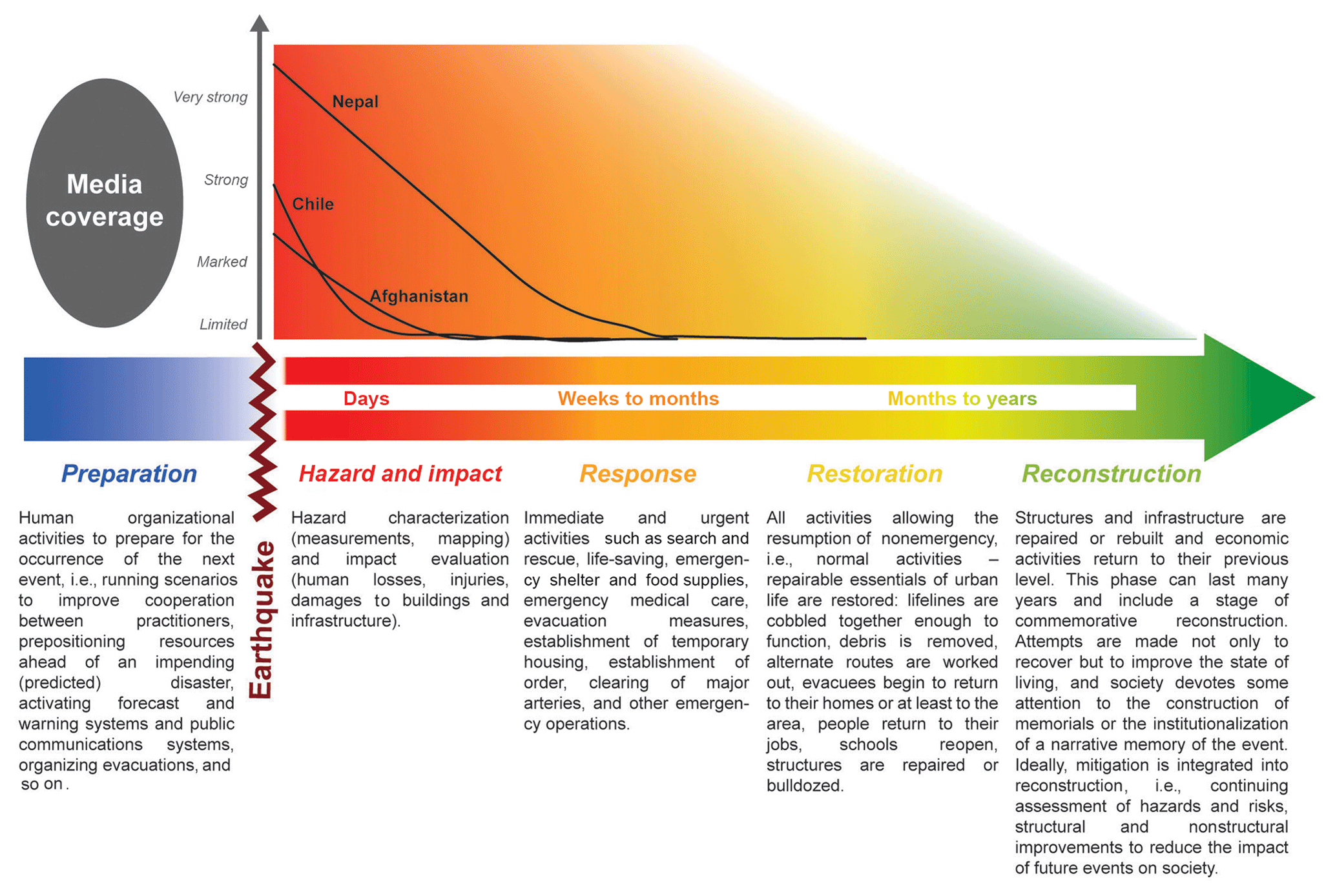Maud Devès, Marion Le Texier, Hugues Pecout & Claude Grasland, « Seismic risk: the biases of earthquake media coverage », Geoscience Communication, 2019, n. 2, p. 125-141

This article has been published within the « Politique de la terre » contract led by CIST.
The capacity of individuals to cope with threatening situations depends directly on their capacity to anticipate what will come next. The media should play a key role in that respect, but an extensive analysis of earthquake media coverage by the international news reveals systematic biases. Exploring a corpus of 320 888 news articles published by 32 worldwide newspapers in 2015 in English, Spanish or French, we found that the press covers a very small number of events: 71 % of the news about seismic events was dedicated to only 3 earthquakes (among the 1559 magnitude 5+ events). A combination of frequency and content analysis reveals a typical framing of the “earthquake news”. Except for the “Nepal quake”, the duration of the coverage is usually very short. Thus, the news tends to focus on short-term issues: the event magnitude, tsunami alerts, human losses, material damage and rescue operations. Longer-term issues linked to the recovery, restoration, reconstruction, mitigation and prevention are barely addressed. Preventive safety measures are almost never mentioned. The news on impacts shows a peculiar appetency for death counts, material damage estimates and sensationalism. News on the response tends to emphasize the role played by the international community in helping the “poor and vulnerable”. The scientific content of the coverage is often restricted to mentions of the magnitude, with the concept of the seismic intensity being largely ignored. The notion of the “seismic crisis” also seems unclear, with aftershocks sometimes being treated as isolated events. Secondary hazards are barely mentioned, except in the case of tsunami alerts. Together, these biases contribute to fatalistic judgments that damage cannot be prevented. If scientific messages are to be communicated, they should be broadcast a few hours after an event. Why not take the opportunity to familiarize people with the real timeline of seismic disasters?
